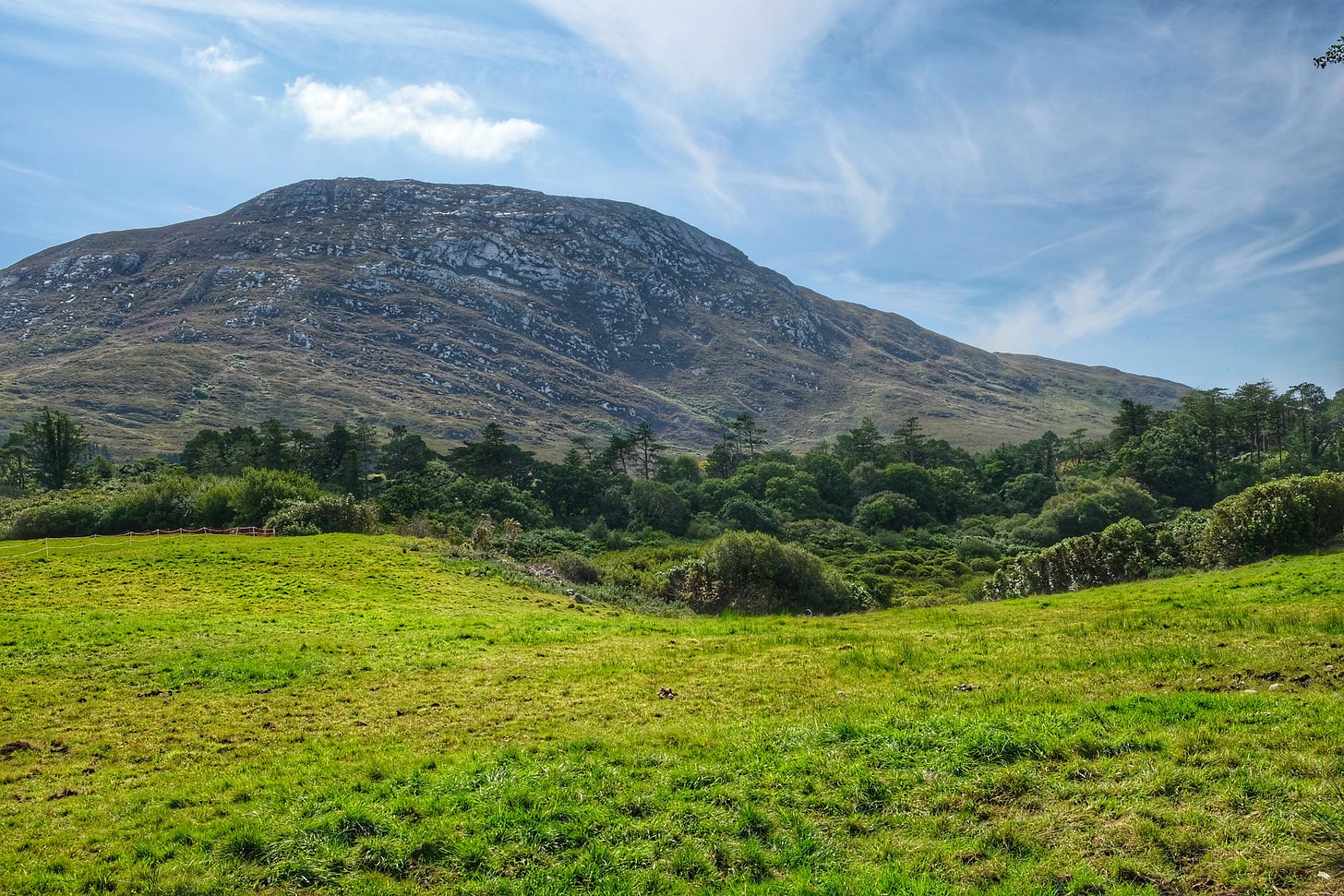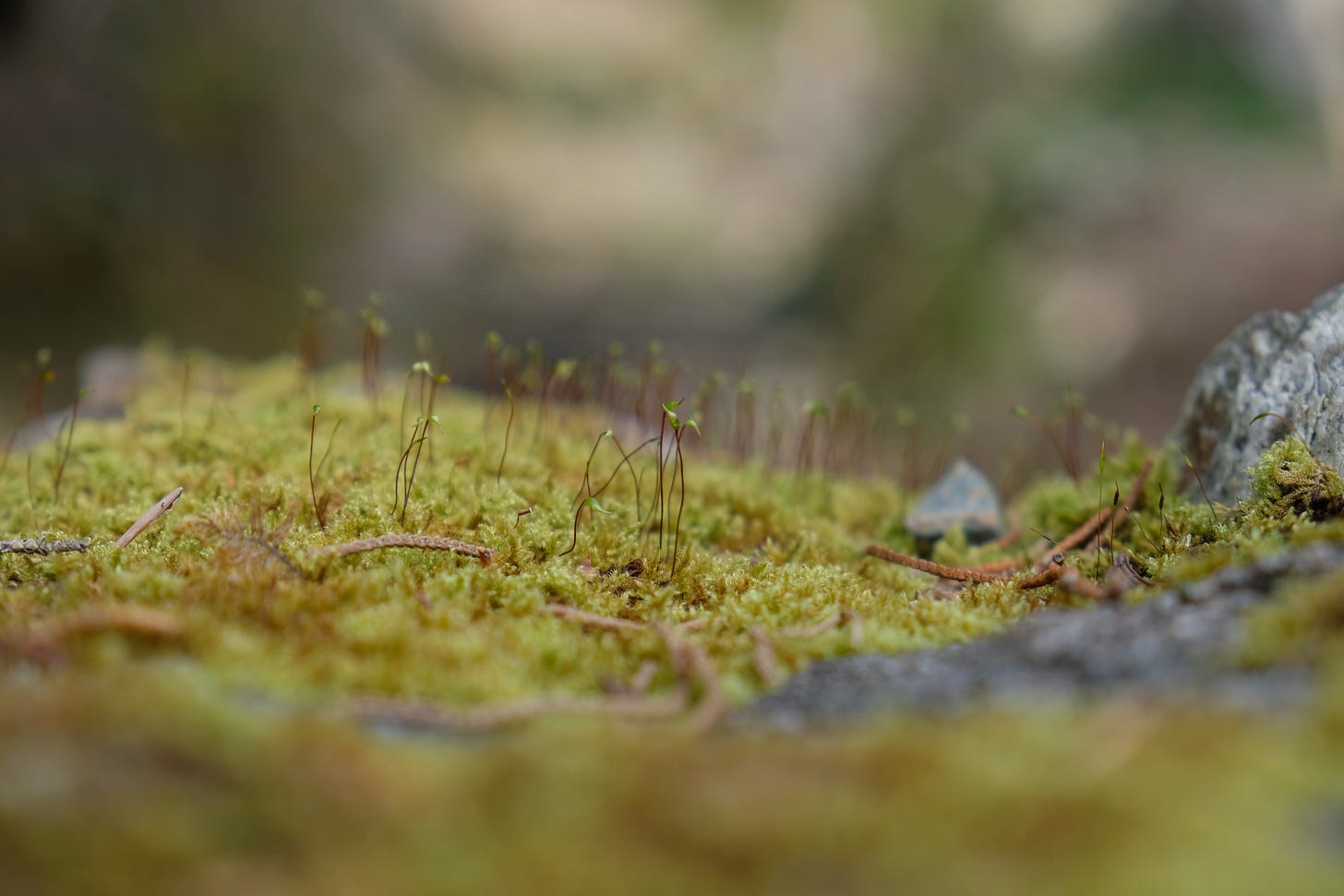Driving around Ireland in a large tour bus, my gaze kept drifting to the small window above the coach’s front door. Something hung there, and I didn’t know what it was, but I was drawn to it—stands of dried grass, arranged neatly, tied together at the ends. I almost asked our driver, Ray, a few times, to tell me about it. I knew nothing, but I assumed it was intended for protection in some way, the way it hung above the door like a talisman.
As we drove from place to place, our tour guide would get on the microphone to share about Irish history, geography, and language. He read to us from Joyce and Yeats and played the occasional Irish folktale through the bus’s speakers.
Early one morning, as we drove from Dublin to County Cork, he told us that Ireland didn’t have just one patron saint. They had Patrick, of course, but they also had St. Brigid. I immediately opened my phone to Google St. Brigid, because of course I did. I was immediately incensed that we Americans could be so obsessed with St. Patrick’s Day when, lo and behold, there was an Irish female patron saint I had never heard of.
Right away, my Google search generated images that helped me recognize what had been hanging in the bus window: St. Brigid’s cross.
St. Brigid was born in the 400s, in pre-Christian Ireland, and we have limited recorded history of her. She shares her name with the Celtic fire goddess, perhaps because legends say she was born with a pillar of fire blazing from her head. She started the first nunnery in a nation known, even now, for its strong Catholic roots.
When Brigid wanted to start that convent, she went to the local king and asked for a plot of land. The king scoffed and laughed at her; I’m sure we can imagine why. Why should a king cede valuable to land to a girl—young, poor, unwed? Eventually, he told Brigid to lay out her cloak. She was welcome to as much land as the cloak would cover.
Brigid held one corner of the cloak in her hand, and she gave the other three corners to the women who had accompanied her to see the king. These sisters turned, and each of them began to walk away from one another, stretching the cloak as far as it would go. I imagine they didn’t anticipate getting very far, expecting the fabric to pull taught at any moment.
There they are, belittled and mocked, expecting to reach the limits of the king’s generosity at any moment. But imagine their surprise when the cloak does not pull taught, when they continue to walk further and further. I can see them staring at one another in awe. I can seem them, laughing, running across Ireland’s green fields.
Eventually, legend says, the cloak covered 5,000 acres.
Brigid was a bishop and the sisters of Kildare held episcopal status until the 1100s, when the rights of women to hold such roles were rescinded. The eternal flame at Kildare burned for centuries until it was extinguished under the rule of Henry VIII or Oliver Cromwell. But in the early 1990s, two Brigidine sisters returned to Kildare and began working to restore Brigid’s story to memory, and eventually they opened a spirituality center on the site of Brigid’s original convent.
Last year on St. Brigid’s Day, I was having coffee with my friend, Liz, and mentioned my growing fascination with St. Brigid. She immediately recommended an episode of the What’sHerName podcast all about St. Brigid, and I queued it up that afternoon. In the episode, the host travels to Kildare and interviews Sister Rita Minehan all about Brigid’s history and the role of the Solas Bhride Center today. (If this is even a little bit interesting to you, you have to listen! Sister Rita is delightful and the story she tells is powerful. I can’t do it justice here!)
Toward the end of the episode, Sister Rita begins talking about “Brigid 1500,” a celebration to commemorate the life and legacy of St. Brigid, which was being planned for the 1500th anniversary of Brigid’s death—February 1, 2024—two years after the podcast episode’s release, but the exact day I happened to be listening in my car on the way to Costco.
I can’t totally explain why St. Brigid has come to mean so much to me, except that over the past several years, I have so needed a bridge. I have needed a bridge from who I was before 2016 to who I am now. I have needed a path between the faith traditions of my childhood I don’t want to lose and the newer, richer, more meaningful faith I’ve worked hard to cultivate (while also washing away and stepping over the discarded and harmful pieces I want to leave behind.) And now, in 2025, I need to hold in my heart and mind the image of a woman tending an eternal flame, refusing to let it be extinguished.
Brigid is the patron saint of babies, midwives, and poetry. Her feast day falls on Imbolc, an ancient Celtic festival to mark the midway-point between Winter Solstice and Spring Equinox, on which we remember that the light is returning. At Solas Bhride in Kildare, they embrace Brigid’s virtues of hospitality, care for the environment, contemplative spirituality, and peacemaking. And so, in that same spirit, I have hung the cross of St. Brigid near my own front door. I think of it as a means of offering up a prayer for protection and blessing for my kids as they step across the threshold each day. It reminds me to tend to my garden beds that sit just outside the door, and it reminds me that I want our home to be a place of peace and refuge. It reminds me that the dark will not win.
We are living again in a time in which the powers-at-be want to tell us, “This far, and no further.”
But Brigid reminds me of another possibility, in which we each grasp the corner of a cloak and run.





“I can see them staring at one another in awe. I can seem them, laughing, running across Ireland’s green fields.” Thanks to your piece, I will carry the story of Saint Brigid with me. And that you listened to that interview on that exact day ✨
What a lovely piece. Well done. I’m rushing to join the St. Brigid club.